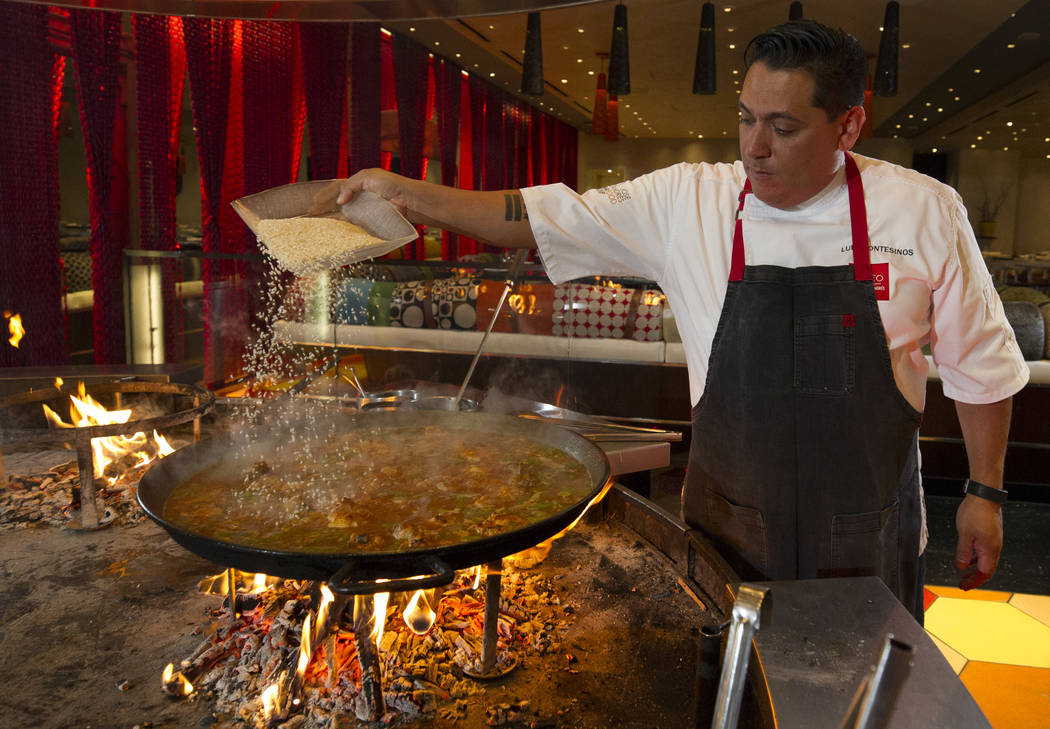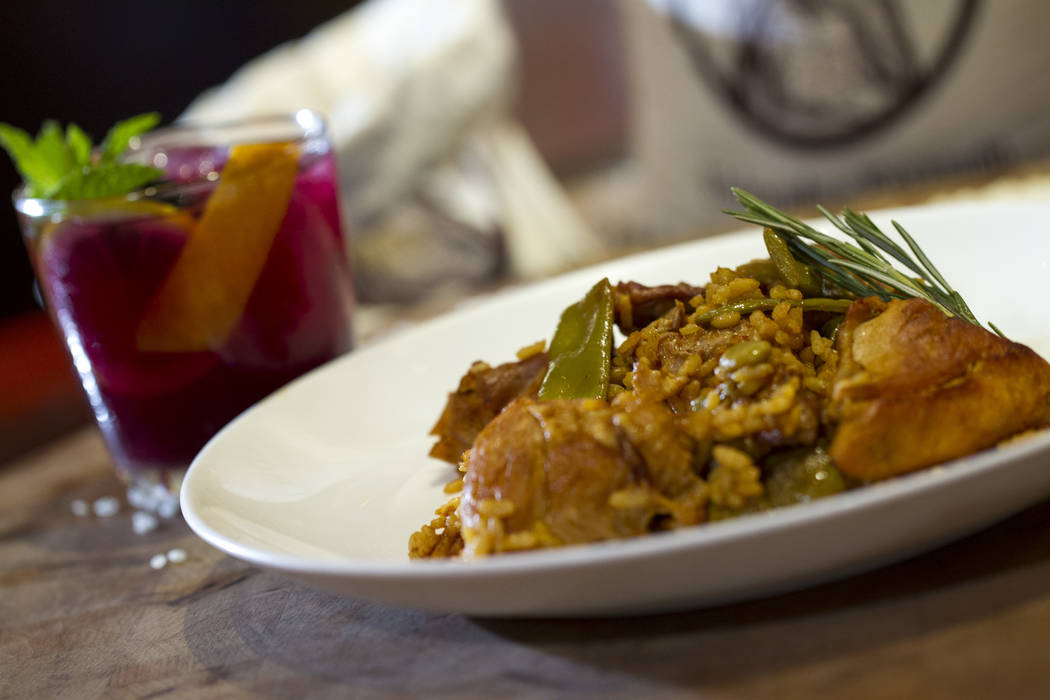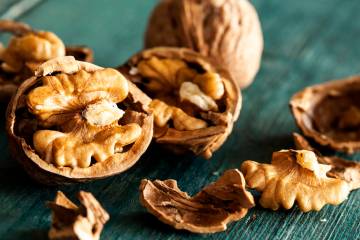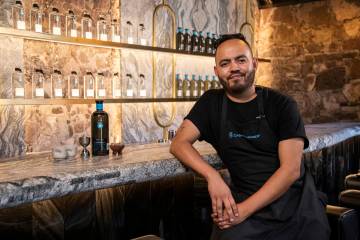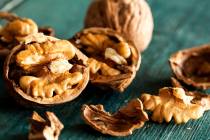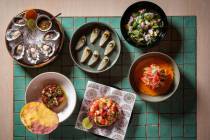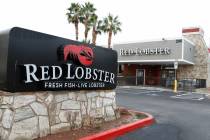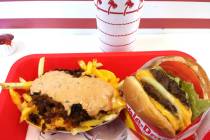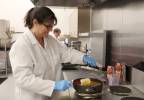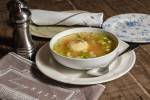Las Vegas chefs share tips for making great paella at home
Forget hot dogs, hamburgers, steaks and chops. If you want to treat your family and friends this summer, whip up a backyard paella.
What you put in it is important but don’t load it up, experts say. More ingredients don’t make a better paella, and besides, it’s not about that stuff.
“Paella’s all about the rice,” said Luis Montesinos, executive chef of Jaleo at The Cosmopolitan of Las Vegas.
“It’s the rice, the socarrat,” said Julian Serrano, a native of Spain and executive chef of Picasso and Lago at Bellagio and Julian Serrano Tapas at Aria.
The socarrat is the crispy, golden layer of rice that forms in the bottom of a deftly prepared paella. Jose Andres, another native of Spain and the power behind Jaleo and China Poblano at the Cosmopolitan and Bazaar Meat at SLS Las Vegas, has been quoted as saying: “When a paella is done just right, you hear that crackling of the rice at the end. It’s because you are forming this tasty, caramelized, golden-brown crust … everybody’s favorite part.”
“Caramelized” is a key word in the production of a good paella. It refers to the conversion of a food’s naturally occurring sugars through browning, a process that deepens flavor.
“Jose says the paella will talk to you,” Montesinos said of his mentor of 10 years. “Once it comes to a boil, we’ll leave that fire medium-high for about 15 minutes, and then I’ll just let the fire dwindle down. You start hearing that crispiness starting to form in the bottom of the pan.”
Montesinos compares it to the storied “snap, crackle and pop” of Rice Krispies.
To create the best paella, and the best socarrat, you’ll want to use a short-grained Spanish rice, such as bomba. But don’t neglect the other ingredients.
“Sofrito is important,” Serrano said of the sauce, or condiment, that’s at the heart of many Spanish dishes. It’s a harmony of simple ingredients: onions, peppers, tomatoes and garlic, all of which are caramelized, starting with the onions and peppers.
“Take your time,” he said. Add the garlic and cook until it caramelizes. Then add the tomatoes and repeat.
Everything that goes into the pan flavors the rice, Montesinos said. In Valencia, Spain, where paella is a specialty, it’s traditionally chicken, rabbit, tomatoes, Romano beans (which are long and flat), lima beans, saffron and rosemary. And, if you’re being truly authentic, snails.
“The rice absorbs all of that flavor that you’re building in the pan,” he said.
Montesinos said versions that are covered with seafood are “more touristy and commercialized.”
“When you see the paellas we have on our menus, it’s usually one or two ingredients,” he said. “We have a shrimp one and a lobster one; we don’t combine them together because we want the rice to highlight that flavor.”
There’s another reason not to put too many ingredients in the paella: Something’s bound to be overcooked.
“Sometimes, the people who do it, they’re killing it,” Serrano said. “They put in so many things, and everything cooks for a different time. In my seafood paella, I don’t cook the seafood in the paella. There’s no point to put it in in the beginning. You can put it in in the middle.”
Serrano said he likes to use Spanish chorizo, and sometimes pork. He uses duck confit, making it separately.
“It gives it a special flavor,” he said. “I like lamb. You can make paella whatever way you want it.”
He also advises using a stock that isn’t too strongly flavored so you don’t overpower the rice.
Montesinos said paella tends to be a communal dish. During the annual festival in Valencia, he said, they’ll put sand on the streets and the cooking fires on top of the sand.
“It becomes literally a community event,” he said.
That sense of community also fires the paella at Forte European Tapas Bar and Bistro on Rainbow Boulevard. Chef/co-owner Nina Manchev said she’s always offered it as a special; now, she does a paella brunch every Sunday. She prepares her Paella Valenciana Mixta with several Spanish chorizos as well as chicken, clams, shrimp, peas and saffron (all of which are available in the adjacent market, Bodega Forte).
Manchev uses a 36-inch pan, which she said serves 50 people.
“We ask people, if they’re really gung-ho about it, to make reservations,” she said.
Serrano said it’s a great dish for entertaining.
“You can enjoy your family and your company and the paella is cooking by itself,” he said.
“I always say as long as you’re cooking and experimenting and trying, just do what makes you happy,” Montesinos said. “That’s what makes me happy — that people are cooking at home again.”
Paella with chicken, mushrooms and shrimp
4 cups water
2 ounces dried shiitake mushrooms
9 tablespoons extra-virgin olive oil, preferably Spanish (divided use)
1 1/4 pounds skinless boneless chicken thighs
10 ounces fresh shiitake mushrooms, stems removed, caps thickly sliced
1/2 pound oyster mushrooms, sliced
1 cup chopped onion
4 garlic cloves, chopped
1 1/2 cups paella rice (short-grain white rice)
1 15-ounce can diced tomatoes in juice
1 dried California chile or New Mexico chile, stemmed, seeded, finely ground in spice mill
3/4 teaspoon smoked paprika
1/2 teaspoon saffron threads, crumbled
2 cups (or more) low-salt chicken broth, divided
1 pound uncooked large shrimp, peeled, deveined, butterflied
Chopped fresh Italian parsley
Bring water to boil in large saucepan; mix in dried mushrooms. Soak mushrooms until soft, at least 2 hours and up to 8 hours. Strain into large bowl. Squeeze liquid from mushrooms back into bowl. Reserve mushroom broth for paella (reserve mushrooms for another use).
Heat 2 tablespoons oil in each of two large (12- to 14-inch) paella pans or skillets over medium-high heat. Sprinkle chicken with salt and pepper. Add half of chicken to each pan; saute until beginning to brown, about 5 minutes. Transfer chicken from each pan to separate large bowl. To each pan, add 1 tablespoon oil and half of fresh mushrooms. Sprinkle with salt and pepper. Saute until mushrooms are tender, 4 to 5 minutes. Using slotted spoon, transfer mushrooms from each pan to 1 bowl with chicken. Add 1 tablespoon oil to each pan, then 1/2 cup onion and 2 garlic cloves; saute 1 minute.
Add 1/2 tablespoon oil to each pan, then 3/4 cup rice. Stir 1 minute to coat. Add 1 1/4 cups mushroom broth, 1/2 can tomatoes with juice, 3/4 teaspoon ground chile, 3/8 teaspoon paprika, and 1/4 teaspoon saffron to each pan. Stir to blend; bring to simmer. Sprinkle rice mixture in each pan with salt and pepper.
Mix 1 bowl of chicken and mushrooms and all juices into rice in each pan. Reduce heat to medium-low. Simmer 10 minutes (do not cover during cooking). Drizzle 1/2 cup chicken broth over each. Simmer 8 minutes. Drizzle another 1/2 cup broth over each. Simmer 8 minutes longer. Arrange half of shrimp atop each paella. Cook until rice is tender, chicken is cooked through, shrimp are just opaque in center, and rice is brown and sticking to pan on bottom, 2 to 3 minutes longer. Sprinkle each paella with parsley.
On the grill: Prepare two charcoal barbecues (medium-high heat). Do not return racks to grills. Place 1 paella pan directly on charcoal in each barbecue. Cook paella according to recipe with a few alterations. 1) Add 3 cups chicken broth to mushroom broth, since more liquid is needed for this version. 2) Cook according to recipe, adding half of ingredients at a time to each pan and adding additional broth as needed to cook the rice.
Serves 8.
— Jose Andres/Bon Appetit
The ultimate paella
1 tablespoon sweet or smoked paprika
2 teaspoons oregano
1 3-pound frying chicken, cut into 10 pieces
1/4 cup extra-virgin olive oil
2 Spanish chorizo sausages, thickly sliced
Kosher salt and freshly ground pepper
1 Spanish onion, diced
4 garlic cloves, crushed
Bunch flat-leaf parsley leaves, chopped (reserve some for garnish)
1 15-ounce can whole tomatoes, drained and hand-crushed
4 cups short-grain Spanish rice
6 cups warm water
Generous pinch saffron threads
1 dozen littleneck clams, scrubbed
1 pound jumbo shrimp, peeled and deveined
2 lobster tails
1/2 cup sweet peas, frozen and thawed
Lemon wedges, for serving
Combine paprika and oregano in small bowl. Rub the spice mix all over the chicken and marinate for 1 hour in the refrigerator.
Heat oil in a paella pan over medium-high heat. Saute the chorizo until browned; remove and reserve. Add chicken skin-side down and brown on all sides, turning with tongs. Add salt and freshly ground pepper. Remove from pan and reserve.
In the same pan, make a sofrito by sauteing the onion, garlic and parsley. Cook for 2 or 3 minutes on medium heat. Then add tomatoes and cook until the mixture caramelizes a bit and the flavors meld. Fold in the rice and stir-fry to coat the grains.
Pour in water and simmer for 10 minutes, gently moving the pan around so the rice cooks evenly and absorbs the liquid. Add chicken, chorizo and saffron. Add the clams and shrimp, tucking them into the rice. The shrimp will take about 8 minutes to cook. Give the paella a good shake and let it simmer, without stirring, until the rice is al dente, about 15 minutes.
During the last 5 minutes of cooking, when the rice is filling the pan, add the lobster tails. When the paella is cooked and the rice looks fluffy and moist, turn the heat up for 40 seconds until you can smell the rice toast at the bottom, then it’s perfect. Remove from heat and rest for 5 minutes. Garnish with peas, parsley and lemon wedges.
— Tyler Florence/The Food Network
Contact Heidi Knapp Rinella at Hrinella@reviewjournal.com or 702-383-0474. Follow @HKRinella on Twitter.



